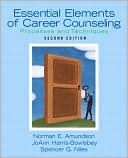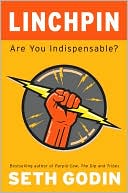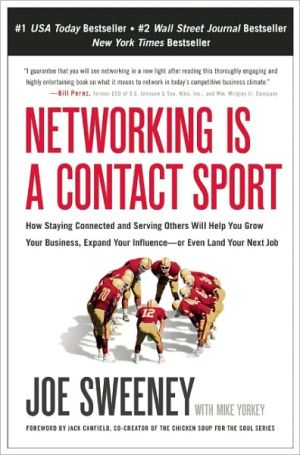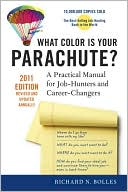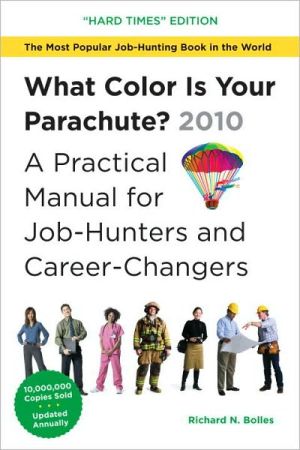Essential Elements of Career Counseling: Processes and Techniques
Search in google:
The second edition of this textbook focuses primarily on the practice of career counseling by describing some of the basic techniques and resources that can be used to support the theories of career choice and development. The authors present information and a structure that is robust and, as such, can be widely applied. They also address some emerging issues such as Web-based counseling and provide case studies throughout the text. A belief in quality career counseling is at the forefront of this book, as well as the exploration of various myths and emerging trends. Career counseling is defined and the competencies that counselors need to pursue as part of their training agenda are outlined. As a supplement, the text includes the NCDA guidelines for competency standards and ethical guidelines as appendicies at the back of the book.
Career Counseling: Myths, Realities, and Emerging Trends 1What Is Career Counseling? 2Factors Contributing to Shifts in Career Counseling 3Seven Common Career Counseling Myths 5Defining Career Counseling 7Career Counseling Competencies 7Using Career Theories to Help Clients 10Theory of John L. Holland 11Counseling Goals 17Sample Counselor-Client Interchange 18Second Interview 18Theory of Donald E. Super 20Counseling Goals 22Sample Client-Counselor Interchange 23Second Interview 24The Narrative Approach of Mark L. Savickas 24Counseling Goals 26Sample Client-Counselor Interchange 26Theory of John Krumboltz 27Counseling Goals and Steps 28Sample Counselor-Client Interchange 28Summary 31Context and Career Planning 32Internal Variables 35Assessing Self-Variables 37External Variables 37Summary 40Negotiating the CareerCounseling Relationship 41Creating a Mattering Climate 42Building Bridges 45Negotiating the Working Alliance 46Coping with Client Reluctance 48Fear of the Unfamiliar 48Refusal to Acknowledge or Take Responsibility for the Problem 49Job Loss and Job Search Burnout 49Fighting the System 49Secondary Gains 49Mandated Participation 50Summary 51Defining the Client's Career Concerns 52Elaborating the Problem 57Viewing the Problem Through a Metaphoric Lens 58Changing Direction 60Summary 61Exploring the Problem: Understanding the Self 62Questioning and Storytelling 63In Search of Flow and Excellence (Self) 63In Search of Flow and Excellence (Others) 66No Worries, Mate 66Strengths in Other Places 67Metaphors 67Structured Assessment 69Limitations 72Summary 72Exploring the Problem: Contextual and Labor Market Options 74Social Context 75Educational and Work/Leisure Context 77Labor Market Options (A Personal View) 80Summary 81Using Websites in Support of Career Counseling 83Deciding Whether to Use a Technology-Based Intervention 85Selecting Systems and Sites 88An Example 89Summary 90Building and Using a Virtual Career Center 92Components of a Virtual Career Center 93Local Information as a Part of the Virtual Career Center 96Access to Web Counseling 96Monitoring Feature 98Organization of the Virtual Career Center 98Sample Sites 99Summary 100Consolidation, Decision Making, and Action Planning 101Consolidation 102Decision Making 104Readiness for Action Planning 107Developing the Action Plan 107Advocacy and Social Action 109Summary 110Implementing Action Plans 111Providing Support to Clients 112Processing New Insights and Information 114Action Plans That Aren't Followed Through 117Handling Additional Concerns 119Summary 120Evaluating Client Progress 121Evaluating Client Progress During the Course of Career Counseling 123Career Counseling Goals Often Change Over Time 124Career Counseling Is Often Short-Term Counseling 125Evaluating Client Progress at the End of Career Counseling 127Eliminate the Ambiguity 127Addressing the Emotions Associated with Ending 127Creating an Environment for a Positive Ending 128Knowing When to Terminate 131Summary 132Adapting Career Counseling to Counseling Settings 133School Settings 136University Settings 138Community Settings 140Summary 141The National Career Development Association's Career Counseling Competencies and Performance Indicators 143National Career Development Association Ethical Standards (Revised 2003) 153References 162Index 168
